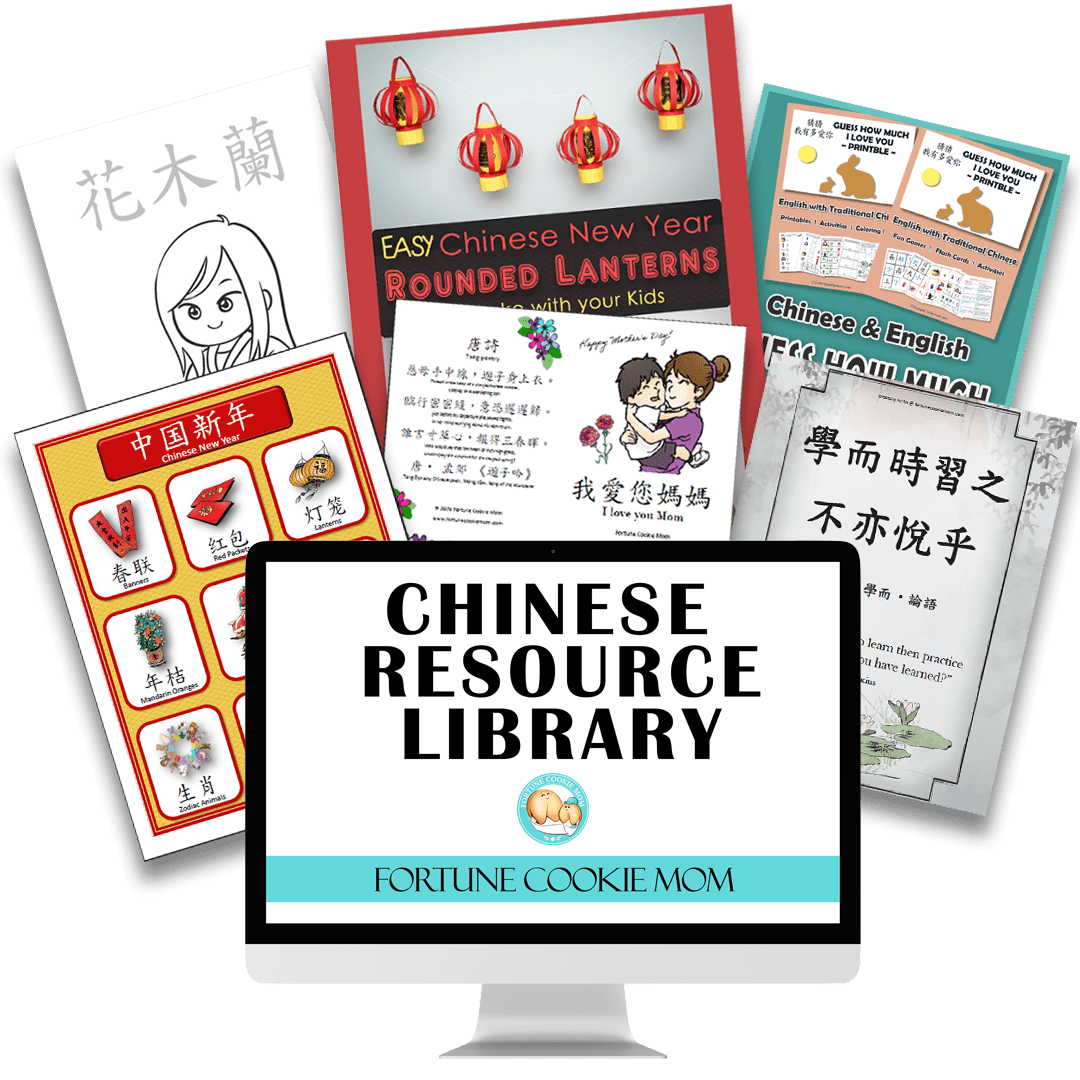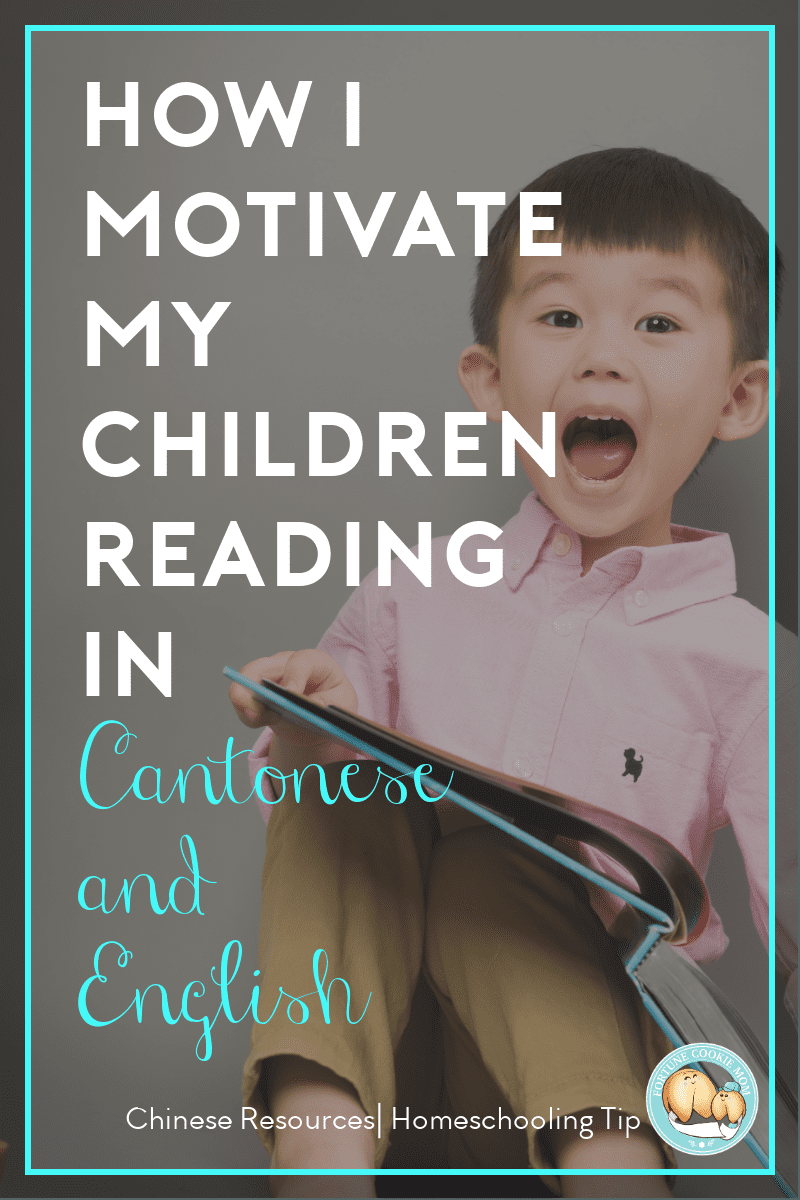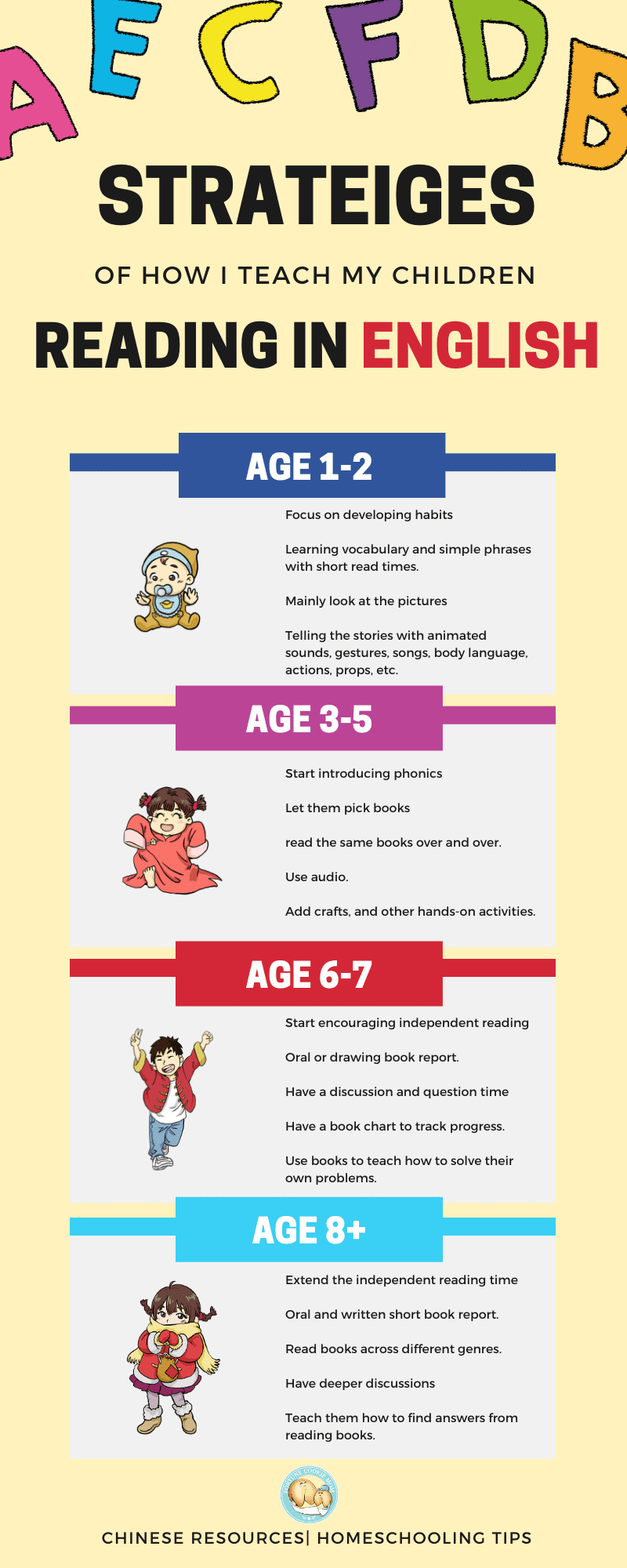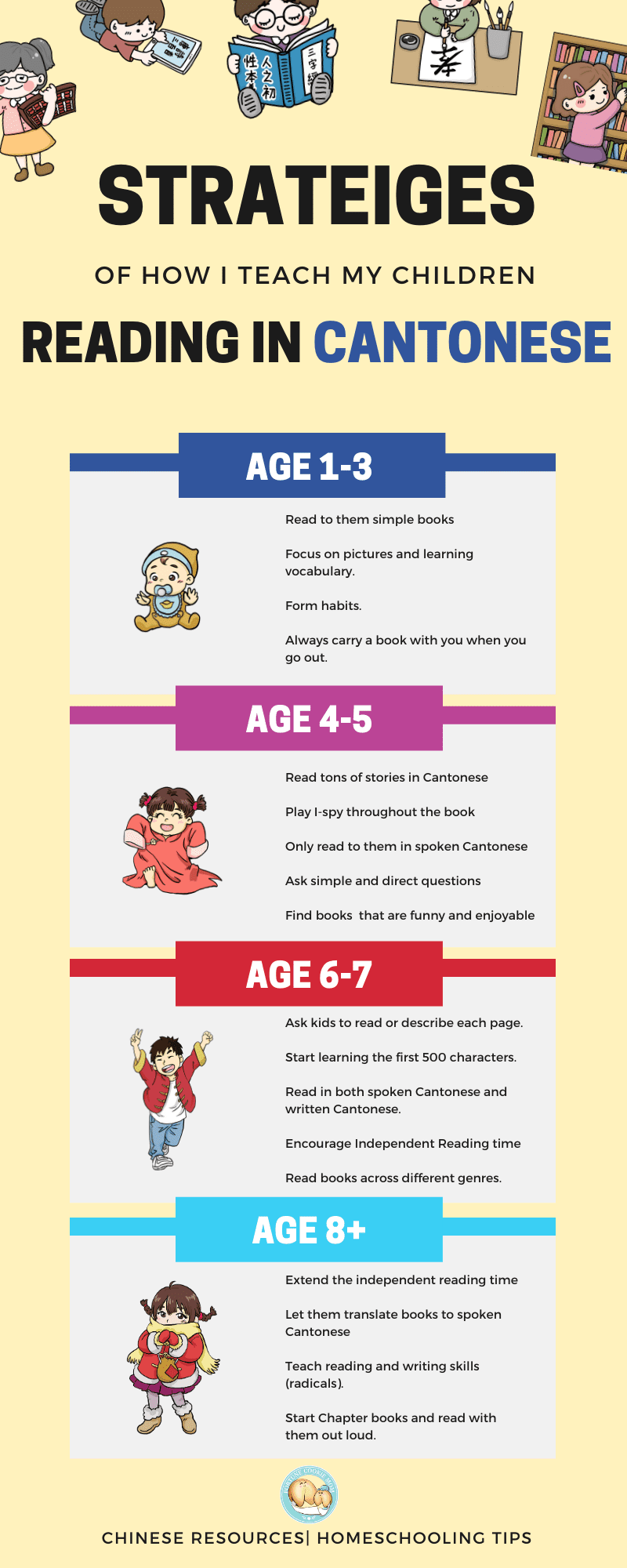Despite all the crazy that happens during the day, our reading time is a quiet, uplifting, and sweet moment we all look forward to. I’m proud I can say all my children love to read books.
“One of the greatest gifts adults can give—to their offspring and to their society—is to read to children.” —Carl Sagan
This blog post will cover what exact things and activities I did to motivate my children reading in both Cantonese and English without stressing out.
The post contains affiliate links, which means I may receive a small commission, at no cost to you. If you make a purchase through a link. See the Disclosure for more details.
Table of Contents
Why do we teach our children reading in cantonese and english
My children are Chinese, Japanese Americans. My husband and I both speak Cantonese and English. We are very much a bilingual family.
We decided English should be their primary language, and that they should be fluent in Cantonese and Mandarin.
Balancing both Chinese and English is a challenge at times but we feel that it is important.
Problems to teach both languages in the Beginning
Even though I almost entirely spoke Cantonese to my oldest child, she began to refuse to learn Cantonese starting around 4 years old. I thought it would be better after moving to Hong Kong but it became even worse.
After some discussion with her, she expressed that she felt inadequate and embarrassed when speaking Cantonese.
This led her to completely shut down for a while. She would even avoid Chinese books in the library and was only willing to read and speak in English.
My Ultimate Goals and Intention of Teaching Chinese
I knew in my heart I couldn’t do anything unless she was motivated and interested in learning. So, my ultimate goals and focus on teaching her and my other children shifted and are now:
- Motivating my children to learn independently by giving them space and freedom to explore on their own
- Avoid forceful actions and choices
- Provide real-life opportunities for my children to apply what they have learned to make learning useful and meaningful
Results of Homeschooling
Reading books is our main activity. We read a lot of classics and fairy tales in both English and Cantonese. Hands-on activities and crafts are next.
In the beginning, storytelling in Cantonese wasn’t very successful because my oldest child (age 4) really didn’t understand enough. She found it boring and frustrating.
I kept trying and testing different methods and activities, she seemed more interested in reading Cantonese stories with me. She was able to follow along and could more easily ask questions if she didn’t understand.
After learning phonics and basic sight words for 3-4 months, she started reading English books on her own before age 5.
By age 6, I started her on 500 basic Chinese characters from Sagebook. She learned the first three books with me and read the rest of the books on her own within 4 months. I was shocked at her progress. After that, her interest in reading Chinese books has improved rapidly. After two years, she knows more than 1000 Chinese characters through reading Chinese books on her own. And my other children are following her example and learning Chinese from her as well.
Honestly, I didn’t do any intensive training such as daily flashcards and phrases or using any educational programs. But instead, all we did was read books. That’s it!
Strategies of How I Teach my Children Reading in Both Chinese and English
Below are the exact strategies I used to keep my children motivated to read both Chinese and English through different reading stages.
ENGLISH (Dominant Language)
[Age 1-2]
- Focus on developing habits
- Learning vocabulary and simple phrases with short read times.
- Mainly look at the pictures
- Telling the stories with animated sounds, gestures, songs, body language, actions, props, etc.
[Age 3-5]
- Start introducing phonics.
- Let them pick books, figure out their favorite animal, character or theme they like the most, borrow tons of books related to it and let them soak in it
- Read the same books over and over.
- Use audio.
- Add crafts, and other hands-on activities.
[Age 6-7]
- Start encouraging independent reading, 15-30 minutes per day.
- Oral or drawing book report.
- Have a discussion and question time about the books they read.
- Have a book chart to track progress.
- Use books to teach how to solve their own problems.
[Age 8+]
- Extend the independent reading time to 60 minutes a day.
- Oral and written short book report.
- Read books across different genres.
- Have deeper discussions and conversations about the books they read.
- Teach them how to find answers from reading books.
CANTONESE (Target Language)
[Age 1-3]
- Read to them simple books
- Focus on pictures and learning vocabulary.
- Form habits.
- Always carry a book with you when you go out.
[Age 4-5]
- Read tons of stories in Cantonese you don’t have to read the exact words, even just describing each page in Cantonese works.
- Play I-spy to find the same character or familiar characters throughout the book.
- Only read to them in spoken Cantonese.
- Ask simple and direct questions in Cantonese during reading.
- Find books and other materials that are funny and enjoyable for them.
[Age 6-7]
- Read stories from books and create our own stories together.
- Ask kids to read or describe in Cantonese each page.
- Start learning the first 500 Chinese characters.
- Read in both spoken Cantonese and written Cantonese. Repeat the same books over and over.
- Encourage Independent Reading time 10-15 minutes a day.
- Add hands-on activities, games, etc.
- Read books across different genres.
- Ask questions and add discussion in Cantonese during reading.
[Age 8+]
- Let them translate English books to spoken Cantonese & Chinese books to English.
- Encourage Independent Reading time 45-60 minutes
- Read books across different genres.
Teach reading and writing skills (radicals). - Let them pick the books.
- Start Chapter books and read with them out loud.
Rewards
*Rewards should be random and unpredictable to form the strongest correlation. Rewards should be tied to the behavior and not the object.
Bad Example:
The child gets a reward for reading 10 books.
Good Example:
At random intervals (we shoot for about 5-10 of the time) take the child to do/eat (random reward) after a reading session saying “wow all that reading put me in the mood for (random reward).
The Importance of Having Independent Reading Time and Family Reading Time
If you don’t have family reading time in your schedule, don’t worry! It’s never too late. Start today! And make it super simple, convenient, and fun for you and your family.
My husband and I have always wanted to have independent reading time and family reading time as part of our bedtime routine. We talked about for years, but it never really happened consistently especially as more little ones joined our family. Our routine wasn’t much of a routine because it was changing all the time for breastfeeding, night feeding, bedtimes, etc.
When my fourth baby turned one, we finally settled into a good routine. My 8 and 6-year-old can read independently, my 4-year-old loves reading and going through all the pictures and finding objects from books. We finally have independent reading time and I can quietly read books on my own for 20 minutes. My husband and I take a turn reading aloud in English and Cantonese.
We are enlightened, learning, discovering new things, and good stories together every day for an hour. It is the most relaxing part of the day and the activity I enjoy the most.
Tips for Teaching your Child to Read in Chinese as a Non-Fluent Speaker
Set realistic goals and prioritize
No one can have everything at once. Taking baby steps is necessary for long-term success, pick only one or two things to do at a time. Don’t set other goals or try to do other new things until after completing any current goals.
Click HERE 5 Steps to Set Better Goals for Bilingual Homeschooling
Focus on building a relationship with the Chinese language
Learning a new language is just like introducing a new babysitter, your child needs time to connect before they feel comfortable following along. If you want to learn how to introduce Chinese in a more meaningful way, join our Free Challenge and try it with over 500+ parents throughout the world.
Lay a solid foundation by forming routines and habits
As long as you have a routine of reading one short Chinese book or listening to one Chinese song each day, your child will use the routine and do it as if on autopilot.
Click HERE to read more about my homeschooling routine.
Learn Chinese together
Knowing they are not alone but their parents are learning together is a powerful motivator. I’m sure this is a gift you can offer to your child and your child will love.
Building vocabulary is vital grammar is not: If you don’t know where to start, building vocabulary is important for beginners, don’t worry about grammar at all they will learn it from reading.
How to Implement These Strategies Without Feeling Overwhelmed?
It is easy to find and create a list of ideas on how to teach Chinese at home, like reading Chinese books, listening to Chinese music, watching Chinese movies, etc.
it’s also easy to make a whole list of things to do without ever acting on it.
This is why I created a FREE 5-Day Live the Chinese Language Challenge to help:

- Join in with parents and educators from all over the world and improve your home while creating a rich Chinese environment for learning the culture and language
- Receive exclusive tools, resources, and printable ONLY for participants
- Receive daily emails full of tips and insights to keep up motivation
Don’t waste time, click the button below & claim your spot now!
You Might be Interested:
- An Interview about My Homeschooling life in Hong Kong
- Homeschooling in Hong Kong: The Fortune Cookie Mom from Honey! I’m Homeschooling My Kids
- Biliteracy: Teaching Bilingual Children to Read and Write in More Than One Alphabet Multilingual Living
- How to Motivate Your Child to Read All about Learning Press
- Reading in Cantonese to Your Child – Storytelling (口語) or Story Reading (書面語)? from Cantonese for Families
You Are Not Doing it Alone
Join my Facebook support group to meet and get connections with parents and educators with the same goals.

身为职业妈妈的我,常常牺牲睡眠来自作教材。版主全方位学习的新年教材真让我省下不少宝贵的时间找资料。四岁的女儿对中文学习有点抗拒。我们善用版主提供的迷你故事书和生字卡来增强她对语文的认识。版主的中文单词棋盘游戏更让女儿投入学习, 因为她想赢嘛!版主的教材可让小孩边玩边学, 太棒了。
This is the second 5-Day Challenge that we have done with Fortune Cookie Mom. Both have been very beneficial to our family. I am a homeschool mom of three little kids. We are not Chinese and do not speak any Chinese. With the help of Fortune Cookie Mom, we are slowly learning! The challenges have given me fun activities to do at home with the kids. Each one has reignited my kid's interest in learning. It has been a fun experience for everybody!










0 Comments